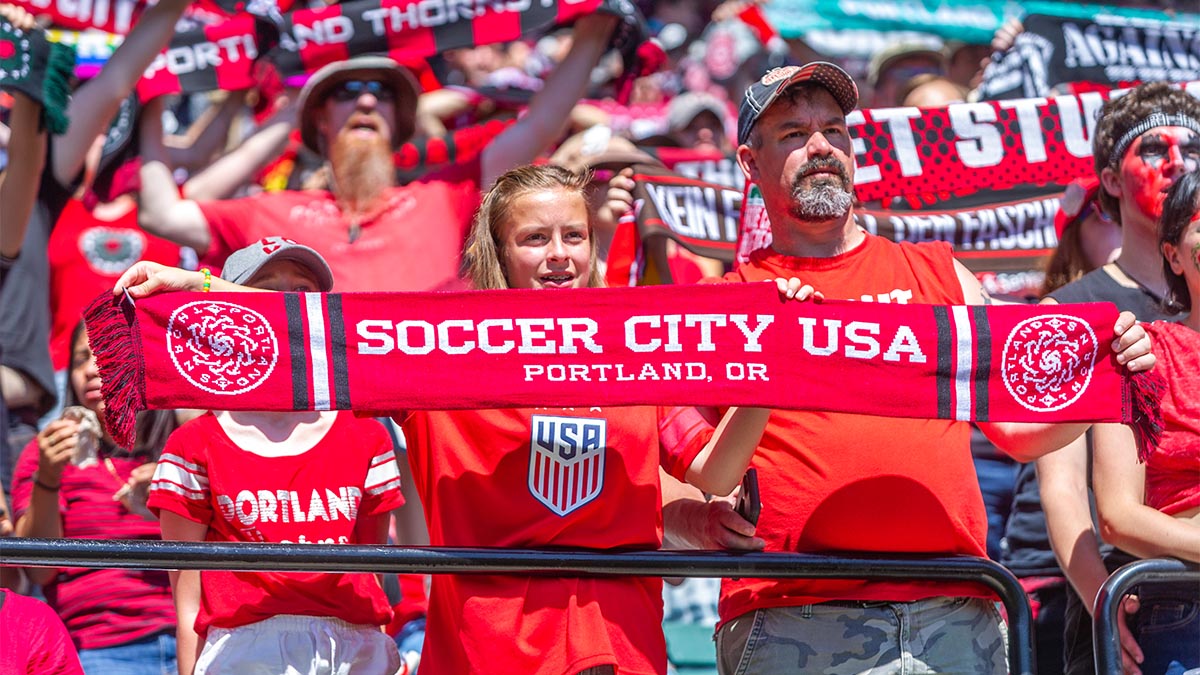Why doesn't America love women's pro soccer as much as they do the USWNT?

The U.S. women’s national soccer team is one of the most recognizable teams in the country. Despite that, women have struggled to sustain a pro league.
The National Women’s Soccer League (NSWL) is the successor to two defunct leagues: Women's Professional Soccer (2009–2012) and the Women's United Soccer Association (2001–2003).

The NWSL was founded in 2012, shortly after the WPS (Women’s Professional Soccer) ended, and began play in 2013. The league originally included eight teams: Boston Breakers, Chicago Red Stars, FC Kansas City, Portland Thorns FC, Seattle Reign FC, Sky Blue FC, Washington Spirit and Western New York Flash.
Three expansion teams have been added: Houston Dash (2014), Orlando Pride (2016) and Utah Royals FC (2018). Two franchises folded (Breakers and FC Kansas City) and another relocated: the Western New York Flash became the North Carolina Courage.
During the creation of the NWSL, an allocation process was used to try to create a competitive balance in the league. Twenty-three women’s national team members were dispersed through the eight founding teams of the league. All 23 members of the current women’s national team are on NWSL teams including: Megan Rapinoe (Reign FC), Alex Morgan (Orlando Pride), Julie Ertz (Chicago Red Stars) and Rose Lavelle (Washington Spirit).
The NWSL has already lasted longer than its predecessors but is still trying to gain stability. The league has recently had financial problems. In February of this year, the league ended its television partnership with A&E Networks, which had a 25 percent stake in the league.
The league secured a TV deal with ESPN to televise games during the second half of the season and a multiyear sponsorship with Budweiser. Both deals were announced near the end of the Women’s World Cup.
Leaders and members of the NWSL have tried to use the momentum from the Women’s World Cup win to generate more interest in and attention for the league. Mike Golub, the Portland Thorns’ president of business, told the Washington Post he believes there will be “material upticks throughout the league in attendance” and the league will gain more sponsors as a result of the Women’s World Cup.
Golub was right. Since the WWC ended in July, the NWSL has seen a spike in television ratings and attendance. The Chicago Red Stars home game against the North Carolina Courage drew a crowd of 17,388, which is four times their average attendance. The game drew an average of 149,000 viewers on ESPN2, which is up 67 percent from the number of viewers the televised league game had during the same weekend one year earlier on Lifetime. The Red Stars-Courage game in late July was the most watched game since the 2016 NWSL final, which aired on FS1.
A recent spike in attendance has boosted the average attendance to 6,493, which would break last year’s record of 6,024 fans. The Portland Thorns are an outlier in the NWSL, averaging over 15,000 fans each of the last five seasons. Portland is averaging 16,959 fans this season as of August 18, which is more than 7,000 more than the Utah Royals (second in NWSL attendance).
Overall the numbers are comparable to the WNBA, which is averaging 7,700 fans this season. The WNBA has also had problems selling its product to the public. The league, on average, has lost $10 million a year according to NBA Commissioner Adam Silver.
The USA Basketball Women’s National team has won six straight Olympic gold medals and the last two FIBA World Cups. Its last loss was in the semifinals of the 2006 FIBA World Championships.
David Carter, an expert on U.S. sports business and University of Southern California associate professor, told the New York Times that activism, nationalism and captivating soccer are reasons international competitions are more popular than women’s professional leagues. This is part of the dichotomy between international play and the women’s professional leagues.
Carter believes the spike in popularity will be short-lived because creating strong sports leagues are about “growing deep roots to be successful on a long-term basis.”
Female athletes realize the great disparity between the support they get during international competition opposed to that during their pro seasons, too. It was referenced by Alex Morgan during this year’s ESPYS. Morgan thanked ESPN for the NWSL’s new television deal and also mentioned how after the World Cup ends “the professional league (NWSL) is what we (viewers) need to continuously lift up and grow.”
Lamar Smith is a graduate student in the sports journalism program at Arizona State University
Related Articles
After talks break down, Rapinoe says USWNT ‘always open’ to equal pay ideas
USWNT, U.S. Soccer agree to mediation over World Cup pay
Donations aim to eliminate U.S. soccer pay differences
Opinion: USWNT discrimination lawsuit underscores importance of Title IX
U.S. women’s soccer team sues governing body over gender discrimination


